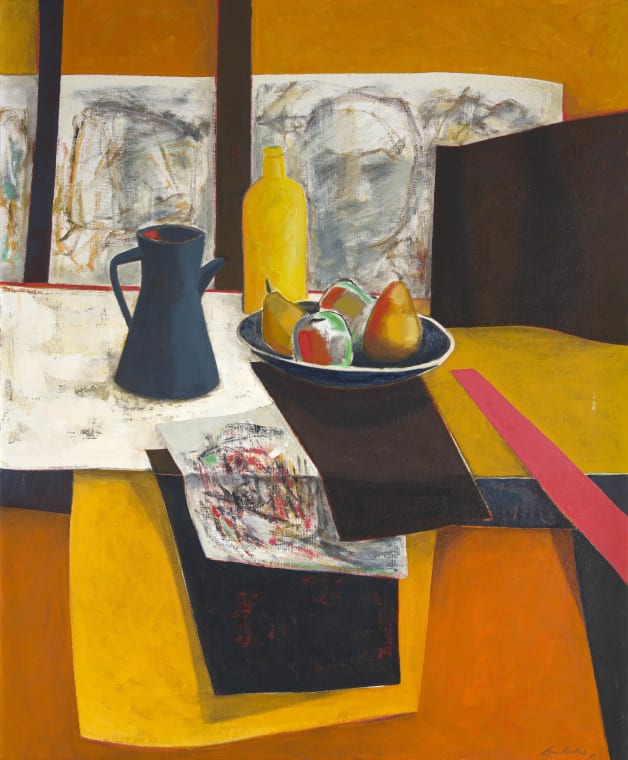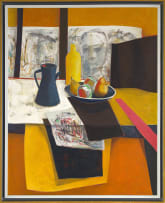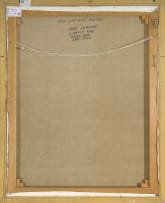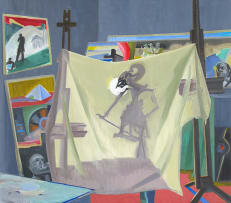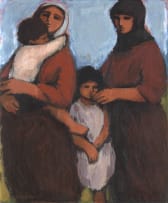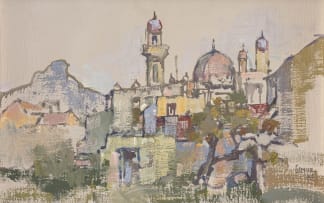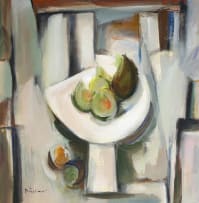Dr Matthys Johannes Strydom Family Collection, Evening Sale
Live Virtual Auction, 22 November 2022
Dr Matthys Johannes Strydom Family Collection Live Auction
About the SessionMatthys Strydom was a true connoisseur of South African art. As director of the well-known Strydom Gallery in George for more than 30 years, he was responsible for the selection of a wide variety of prime art works from all over the country for the annual exhibitions. The Dr Matthys Johannes Strydom Family Collection offered by Strauss & Co gives collectors and art lovers the chance to become part of this great selection from the art history of our country.
Incl. Buyer's Premium & VAT
About this Item
signed and dated '89; inscribed with the artist's name and title on the reverse
Notes
"Erik is veral bekend vir sy eiesoortige landskapskilderye, maar hy het ook treffende stillewes geskilder. Die kenners beweer dat die invloed van Léger op sy werk die duidelikste te sien is in sy stillewes. Ek het nie die kennis om daaroor kommentaar te lewer nie. Ek geniet hierdie een egter baie en is diep dankbaar dat ons dit bekom het."
"Erik is best known for his distinctive landscape paintings, but he also painted striking still lifes. The experts claim that the influence of Léger on his work can be seen most clearly in his still lifes. I do not have the knowledge to comment on that. However, I really enjoy this one and am deeply grateful that we acquired it."-Dr Matthys J Strydom, 2021
Laubscher first achieved notice in South Africa with his still lifes of the 1950s. A foundational element of his output, Laubscher's still lifes reveal what he later in his career described as his "acceptance and application of concepts fundamental to European painting".1 After completing basic art studies in post-war London, Laubscher moved to Paris in 1950 to study at the Académie Montmartre. His tutor was painter Fernand Léger. Laubscher's earliest still lifes were strongly influenced by Bernard Buffet, a leading French expressionist, but he rapidly integrated the influence of Léger's monumental forms, Braque's flattened planarity, Picasso's cubist innovations and Matisse's opulent coloration and clearly delineated forms.
Despite his later renown as a landscape painter, Laubscher continued to paint still lifes throughout his career. Especially from the 1960s onwards, works in this genre are noted for their graphic simplicity, flattened picture planes and bold use of colour to communicate the vitality of his subject matter. Colour is fundamental to all of Laubscher's work. He was particularly fond of burnt tones of red, orange and yellow. This composition playfully challenges the staid academicism of the still-life genre. Laubscher incorporates dissonant examples of studio practice (two rudimentary outlines of human heads, an abstract-expressionist composition) within a genre scene, in effect proposing a unity of all artistic expression.
1. Muller Ballot (1994) Erik Laubscher, University of Stellenbosch, Stellenbosch. Page 1.
Provenance
Dr Matthys Johannes Strydom Family Collection.
Literature
Patricia Beachy Head (1995) 'The Individualist's Eye, Erik Laubscher - Painter', Lantern, Vol. 44, No. 1, page 47, illustrated in colour.
Hans Fransen (2009) Erik Laubscher A Life in Art, exhibition catalogue, Stellenbosch: SMAC Art Gallery, page 279, with the date 1996.
Matthys Strydom (2021) Nog Stories Teen My Muur, George: LW Hiemstra Trust, illustrated in colour on page 64 with the title 'Stillewe met Sketse'.
